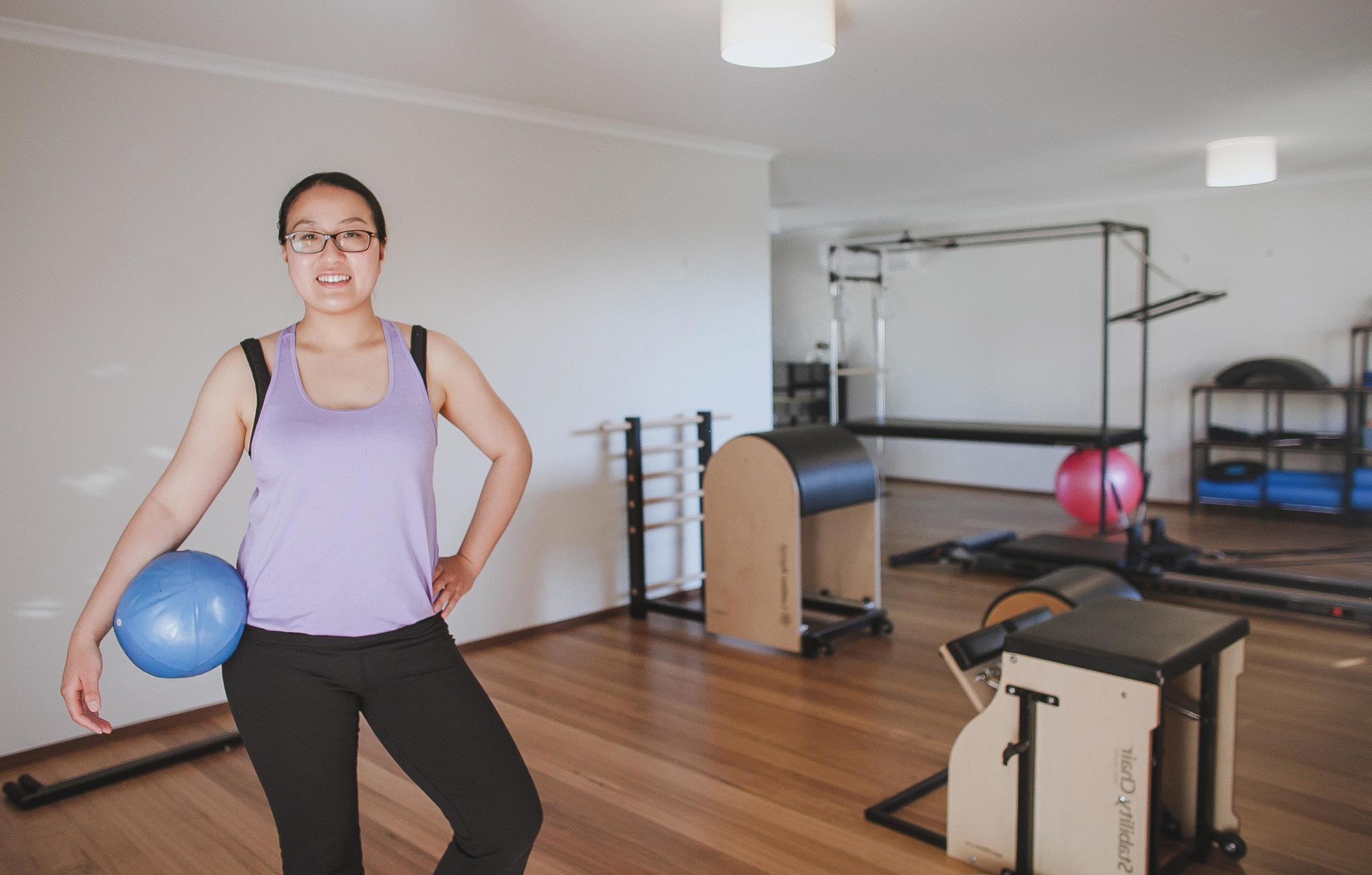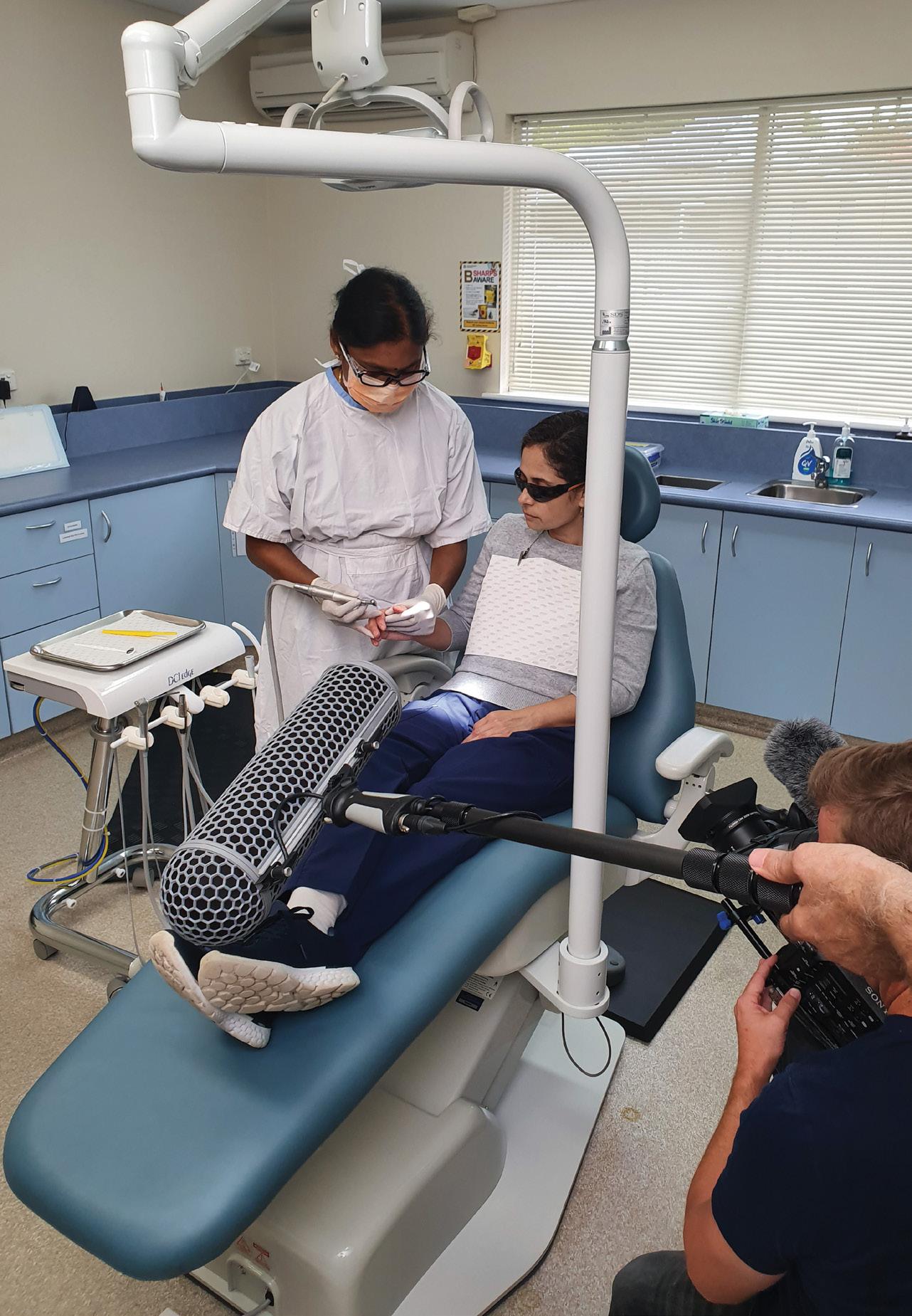
8 minute read
We’ve Got Your Back
A dentist is no stranger to occupational back pain, but fortunately there are some easy ways to take care of yourself on the job. We seek advice from the experts about preventing injury and what to do if you are experiencing pain or discomfort
Preventing back pain
Shane Roenne, physiotherapist, founder of The Movement Mill, and President of the NSW branch of the Australian Physiotherapy Association, says to help prevent back pain, it’s best to move around and not have the same position for long periods (which he says he knows is easier said than done). However, his biggest tip for posture is to get moving outside of work.
“Do some regular exercise and make sure you keep your hips, back and thoracic areas mobile,” he says. “Do something to strengthen your body, too. Greater strength leads to increased endurance and you will manage to work all day without a problem.
“I recommend you sit on a stool, making sure you have the bones in your bottom in contact with the stool.
Ensure you don’t sit with your pelvis posteriorly rotated and leaning on your glutes; this tilts your pelvis and aligns your spine,” he adds. “Also, try to keep your back straight. It’s easier to demonstrate than explain in words, so if you need to, go see your physio to get taught how to do this.”
Specialist musculoskeletal physiotherapist from Curtin University and Bodylogic Physiotherapy, Professor Peter O’Sullivan, says evidence suggests the big predictors of neck and back pain are things such as inactivity, fatigue, muscle tension, poor sleep, chronic stress and low mood.
It’s not just about the spine
Understanding and managing spinal pain presented by Professor Peter O’Sullivan
FRIDAY SEPTEMBER 17 Friday 1.00pm–5.00pm ADA House, West Perth
With that in mind, his advice for a dentist to help prevent back and/or neck pain are:
• Understand why you have pain by asking yourself a few questions: what are my levels of sleep, activity levels, fatigue, stress/tension, mood?
• Don’t try to tense or protect the area of pain – respond to pain through relaxation and gentle movement of the painful area.
• Put simple measures in place in order to care for your physical and mental health:
• Good sleep habits • Regular physical activity – with a combination of cardio and strength work • Relaxation/meditation
• Good work-life balance/social engagement If these measures fail, find a physio who can help you identify the factors related to your pain and teach you strategies to effectively manage your pain. When to seek help
Peter says help should be sought from a physiotherapist or other health professional when pain becomes persistent, bothersome, distressing or disabling. “The most important thing to look for in a physiotherapist is a coach – someone who can help identify the key factors linked to your pain and provide self-management approaches to manage it,” he adds.
“While passive therapies like massage, mobilisation or manipulation can be helpful in the short term, they tend only to provide short-term relief; long- term strategies are better.”
Treatment options
Shane says treatment options may include:
• Manual therapies, such as massage, joint mobilising, stretching, taping, gentle activations or exercise to help settle the symptoms/pain.
• Addressing any joints above and below the lumbar spine that the client may have been putting too much pressure on while they are working and have been part of the cause of their injury.
• Once symptoms are under control, a physio will work with the client to help strengthen their back and body in general. “Most recent studies show that 6-12 weeks of strengthening exercises help reduce back pain recurrence rates and achieve better longterm outcomes,” Shane says. “This is often where people fail – they start feeling better and they stop.
Spend the time to strengthen and you will be able to stay at work and prevent developing chronic conditions that are more serious.”
• Exercise. “I imagine it’s like brushing your teeth – it doesn’t work if you don’t do it, and the preventative nature of doing it regularly leads to long-term benefits and less serious interventions being required down the track,” Shane says.

Jean Wu
Therapeutic Pilates
Dr Jean Wu, general dentist, founder of Posture and Core Pilates and current PhD student researching dental-work-related musculoskeletal disorders, understands about back pain. “When I was younger, I did not take care of my physical health and would often feel niggling pain in my back and push through,” she recalls. “Unfortunately, the consequence of these bad choices resulted in a work-related lumbar disc bulge not long after I started my dental career. Luckily, I discovered pilates therapy as part of my rehabilitation. It not only helped me manage Top tipmy pain but also taught me the importance of prevention.” Prevention is always better than cure. Get some individualised advice on how you can prevent lower-back injury and ways to stay active and look after your back. Your body is how you make your living, you need to ensure you look after it and can stay doing what you love. - Shane Roenne
In Jean’s experience, the most common work-related musculoskeletal disorders among dental professionals include neck pain, upper back pain, lower back pain, hunching, upper shoulder tension and unilateral bending issues. Jean believes therapeutic pilates is helpful in the prevention of occupational back pain, and with an appropriately qualified instructor, provides the tools to rehabilitate existing problems and prevent future problems. “It’s about achieving a balance between flexibility, strength and functional movement that’s specifically seen in the dental industry,” she says.
Dental professionals work in a uniquely challenging environment, according to Jean. “A mouth is a very small place in which to perform very high-focus, fine-detail work,” she explains. “This routinely puts our bodies on the line in order to achieve better outcomes for our patients. “The main risk factors for developing musculoskeletal injuries among dental professionals include awkward and sustained postures, poorly-designed workspaces, long working hours without breaks, being subject to heavy and sustained forces and inappropriate ergonomics.”
Dr Jean Wu’s
TOP 3 TIPS TO AVOID OCCUPATIONAL INJURY
1Extension for prevention! Dental professionals spend most of their workday hunched over. It’s so important to incorporate back extension (both in terms of flexibility and strength) into your daily routine to reverse the effects of dentistry on your body.
2Make time for movement. Dental work is often highly focused, and our bodies are in a static position for long periods of time. If possible, find time for short bursts of movement. I recommend to all my students to do 10 minutes of pilates in the morning before work to turn on the postural muscles of the body and it will set you up for the day. Another good option is to go for a short walk at lunch time.
3Release tight spots and strengthen weak spots.
One common example is the management of uppershoulder tension. It is not enough just to release the tight muscles (usually the upper part of the trapezius muscle) through massage because the minute you return to work, the tension will also return. Instead, there also needs to be strengthening of the surrounding muscles such as the lower part of the trapezius muscle and the latissimus dorsi muscles to act antagonistically and prevent reactivation of the upper trapezius.


Vanessa Smith
Yoga
Vanessa Smith, from Vanessa Smith Yoga, says as dentists, there is a requirement to sit for long periods of time, which equals shortened hip flexors, putting more strain on the psoas and lower back. “You’re hunching forward for long periods of time too, so any stretch to twist your spine, open up your hip flexors and open up your chest and shoulders is just going to create so much relief in your body because it’s just not natural to hold that position for so long and the body gets mad and sends pain receptors when we don’t listen to it,” she says.
“Your body wants balance, so if you’ve sat one way or done one movement for a long period of time your body wants you to balance it with opposing movements,” she adds. “Otherwise, it creates tightness, aches and pains and all sorts of ongoing issues in order to protest what we’re doing. As humans, we don’t always listen and we tend to complain rather than being proactive, but your body will just keep sending signs that things need to go back to balance until we listen and respond.” Vanessa has been leading yoga sessions at ADA House for members and says the response from the sessions has been positive.
“I think most adults just want an opportunity to take some time out and relax and ease up some aches and the classes seem pretty positive about the results they’ve been getting,” she says.
“I try to create a space where clients can unwind and just get out of their heads as I can imagine this profession has a lot of pressure that goes with it. Plus, a lot of people have families so it’s hard to give yourself that ‘me time’.
“Overall, I think as long as we are targeting the main areas that are affected by your day job and also give you some space to relax the classes are fairly well received.”
For dental practitioners who want to try yoga in the comfort of their own home, Vanessa posts free classes to YouTube:








